
By Elena Vosnaki, Perfume history curator
Perfume, fragrance, cologne…Whichever way you name it, man has created scents since forever. For pleasing the gods, for protecting health, for seducing or simply for pleasure, fragrance is a work of the mind that serves a purpose. It illustrates the day in a hundred colors, it provides comfort, piquancy, or intrigue. Subject to changes in fashions through the ages and a fine product of design, in both construction and outer presentation, fragrance nowadays is increasingly becoming a subject of personal discovery.
Smaller brands, resurrected older brands, exotic ingredients from all over the world, challenging scents not relying on advertising, but rather on word of mouth, are all employed in a desire to smell unique. Fragrance is a signpost of the self, a mark of one’s own individuality in a vast, uncertain world.
2000 BC THE FRAGRANT PHARAOHS
Perfume has its roots in antiquity, with the name literally referring to the fragrant offerings people across the Mediterranean and Middle East burned as incense to travel upwards to the gods: “per fumum” is Latin meaning “through smoke”. The ancient Egyptians in particular were so invested in perfume making (thick unguents worn on their bare skull under wigs, as well as solid mixes kept in the Pyramids to accompany the dead into the underworld), that when Julius Caesar conquered Egypt he dictated that alabastra,ancient ceramics used to hold fragrance, were tossed to the crowd to demonstrate his victory!
Resin, mystique and sweet incense for the dead to assuage the gods Anubis and Osiris. The fragrant smoke rises in the air like hands in prayer.
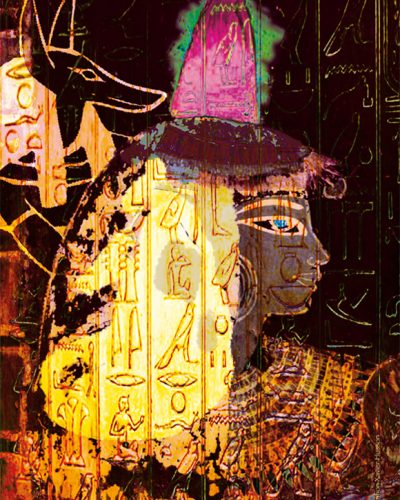

600 AD ABBASID CALIPHATE, BAGDAD
“Musk”, an essence extracted from the pods in the genital region of the Nepalese/Tonquin deer musk, is among the most sacred of scents. More penetrating and more persistent than any other material, musk acts as incense, medicine and perfume, all in one. Arabs took the precious, hard-to-extract dried pods of the animal to make the softly enveloping, fragrant muṣká essence (the word means “testicle” in Sanskrit) and built it into the mortar of their mosques. As the sun hit the walls, the warmth made the smell rise, even 200 years after the construction of the building…
Nowadays musk is substituted by intricate and refined replications of the raw.
Musk and exotic leathers on the Silk Road, the dry, warm scent of the caravan flies on the magic carpet.
1340 RENAISSANCE BEAUTY
The Queen Consort of Hungary, Elisabeth, also regent queen of Poland, used the cologne Eau de la Reine d’ Hongrie all her life, both using it on her skin and drinking it. It was said that she owed her beauty and good health to it, to the point that she attracted a suitor when she was already 72 years old.
The miraculous reputation must have stuck for much longer than her lifetime. In the popular tale “Sleeping Beauty” by writer Charles Perrault, L’Eau de la Reine d’Hongrie is clearly featured as a mean to try to wake the sleeping princess, alas to no avail…
“ETERNAL BEAUTY ELIXIR”
A patch of rosemary for remembrance, fresh citrus and lush jasmine make the heart grow fonder.
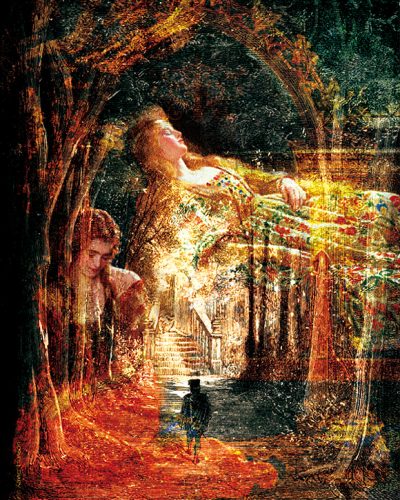

1630 PROTECTION FROM THE PLAGUE
During the great plague in Toulouse (claiming 500,000 victims) 4 thieves were looting the houses of the dead, completely unharmed by the pestilence. When found out, about to be burned at the stake, the judges intrigued by their resilience offered the more lenient death by hanging, in exchange for their secret: the scented recipe, Le Vinaigre des 4 Voleurs was used to rub their whole body for protection. The same incident also happened in Marseilles in 1720, whereupon the thieves shared the recipe with the people thus saving their own lives as well.
In fact before the sanitation of European cities in the 18th century the use of aromatics and fragrances was based on their prophylactic role. During plagues perfumer-doctors visited houses with aromatics molded into a gigantic bird’s beak to protect themselves. As those “witch doctors”, with their duck-like noses, were often no more efficient for the pestilence than the placebo effect, the term “quack” became a synonym for charlatan!
“EAU DE PROTECTION”
Bitter herbs, camphor, acid and spice, those are the things protecting men who are wise.
1685 ON THE HIGH SEAS
When King Charles II of England had a fatal stroke in 1685, rumor rose of foul play, as it was suggested that his favorite breakfast of eggs with ambergris was the perfect medium to administer poison. The simultaneously warm, nutty, saline scent of ambergris would effectively conceal any foul taste.
The thick, gelatinous substance washed ashore, blanched and hardened by the sun and the waves, is ambergris, produced by the sperm whale (Physeter macrocephalus). Produced in the animals’ digestive system to coat the whale against the sharpness of cuttlefish beaks, it is prized in perfumery for its warm scent and the tenacity it lends to perfumes. It’s literally worth its weight in gold!
In Henry Melville’s novel ‘Moby Dick’ a whole chapter is devoted to the “grey pearl” of perfumery: “I say, that the motion of a Sperm Whale’s flukes above water dispenses a perfume, as when a musk-scented lady rustles her dress in a warm parlor.”
“GREY PEARL OF THE OCEAN”
Bodies lying down on the beach, their skin melting under the sun, their skin salty with the kiss of the waves.
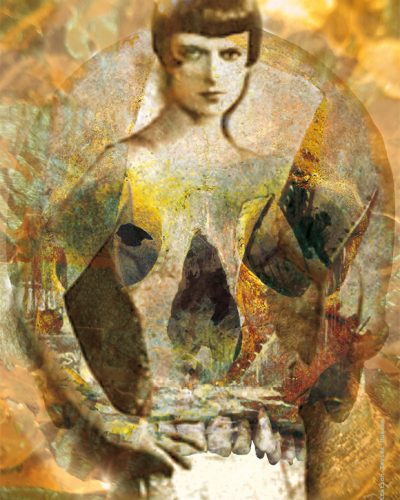
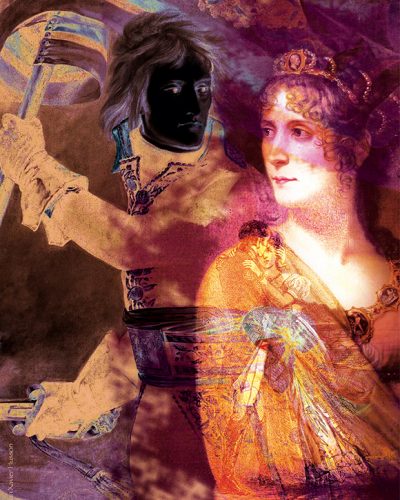
1800 IMPERIAL STYLE
Napoléon Bonaparte paid homage to his Corsican roots by embracing the Italian- conceived Eau de Cologne formula (famously popularized in the German city of Cologne by Jean Marie Farina, hence “cologne”). The legendary general went through a gallon of the fresh citrus-smelling cologne a day and also consumed it internally on soaked sugar cubes; it was considered a remedy against colds and bad breath. But his attention to hygiene must have stopped at the mouth: in a letter addressed to his later wife, Joséphine de Beauharnais, Napoléon dictates “I’ll be back in 3 days, don’t wash!”
“MIRACLE WATER”
An Italian spring morning when, after a shower of rain, daffodils
and orange blossoms release their scent.
1862 VISIONS OF THE EAST
When Ingres painted the famous Le Bain Turc (The Turkish Bath), full of naked odalisques, and Georges Bizet wrote The Pearl Fishers, Orientalism, the art genre imitating aspects of Middle Eastern and Far Eastern life, was rampant in Europe. Profiting from the discovery of newly found lands and becoming aware of both chocolate and vanilla, Europeans began cultivating vanilla orchids for their fragrant pods as a flavoring , but it was the isolation of the pure substance of vanillin (found in both cloves oil and pine bark) which made the vanilla scent inexpensive. By the late 19th century synthesized, nature-identical vanillin became a commodity. Pioneer perfumers used it lavishly in their perfumes giving wings to a new genre of fragrances, the “Orientals”, inspired by western visions of the exotic East.
“MILLE FEUILLE”
Melt-in-the-mouth vanilla surrounds you in comfort, like falling down on a goose down duvet.
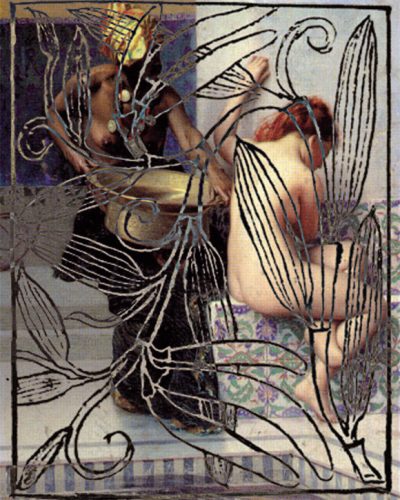

1917 OUT OF THE TRENCHES
On the Eastern Mediterranean island of Cyprus, the Pyrgos manufacturing “plant” is the first archeological site of a perfumery dating to1850 BC. The tradition of “perfumes made in Cyprus” however was carried over through the centuries via a cosmetic preparation, the “cipria” face powder, popular throughout the 19th century. This powdery, mossy scent gave inspiration to an ingenious Corsican perfumer, François Coty. He devised a clever harmony between 3 basic complementary elements: bergamot fruit, labdanum resin (from the rockrose bush) and oak moss (a parasitic organism on oak trees which smells like ink). Thus Chypre(French for Cyprus) was conceived. Its influence in the fragrance business was so monumental that every company produced their own “version” of “chypre”.
“CYPRUS FOREST”
The sun through the foliage lights upon trumped undergrowth…fallen leaves, soil and warmth mingle in the air.
1921 EAU COUTURE
“A woman shouldn’t smell like a flower bed. Give me a perfume that smells like a woman!” That was the demand made by Coco Chanel to her perfumer Ernest Beaux. Emancipating women by doing away with the corset, she wanted to also add a “designer” perfume, radically different from the previous “polite” floral waters of the Victorian and Edwardian eras in both scent and concept.
The crucial material in Chanel No.5, the perfume in question, is aldehydes, a sequence of molecules found in nature but purposefully produced in the lab, which help floral notes and other aromas “rise” and project like the bubbles of champagne.
No.5 is not the first perfume to contain aldehydes, but it was the first to contain them in such excess. Rumor has it the perfumer’s assistant overdosed them by accident in one of the handful of editions presented to Chanel. She ended up choosing it. Chanel No.5 became a pop culture symbol when Marilyn Monroe famously said it’s all she wears in bed and Andy Warhol painted the bottle in 1985. The company paid homage to it in their 1997 pop art print advertisement. Floral “aldehydic” fragrances went on to become a best-selling genre.

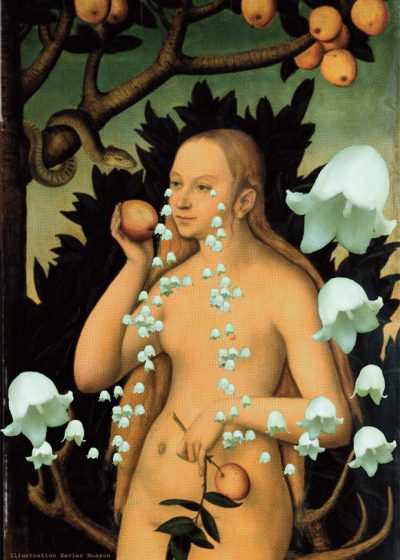
1956 GOLDEN AGE OF PERFUMERY
To extract lily of the valley, a verdant, rosy-lemony scent, is impossible. And yet the classic Dior perfume Diorissimo smells identical to the spring meadows which erupt in small white bells in May. Its perfumer, the legendary Edmond Roudnitska, grew lily of the valley specifically for studying in his garden at Cabris. He approximated the sweet, heady yet also fresh scent through a clever combination of other ingredients.
The little flower “bells” are said to be created from the tears that Eve shed when she was exiled from Paradise. Thanks to euphemism, lily of the valley was later considered a good luck charm, as king Charles IX gave a posy of these flowers to his mother Catherine de Medici for luck on some fateful May 1st. From then on this tradition carries on: in France May 1st continues to be the day people offer nosegays of this little fragrant flower!
“GOOD LUCK CHARM”
Lily sings with its high pitched voice, the song of May in the
verdant countryside.
1992 SWEET & NAUGHTY
The economic uncertainty following the Stock Exchange crash of 1987 fed the need for comforting scents. And what is more comforting than something smelling of vanilla, milk desserts and sweet delights which remind us of our childhood, a time we were cared for and protected? Fashion designer Thierry Mugler came with the definitive “market influencer” in Angel, the impact of which we’re still feeling 20 years later. The mix of an edible-smelling caramel core (due to the molecule ethyl maltol, which smells like cotton candy), tart fruits and dark patchouli was revolutionary. It has now become standard for every company who have their own “gourmand” fragrance (literally meaning “glutton”), as sweet as dessert: Flowerbomb, Miss Dior, La Vie est Belle, Armani Si, CKEuphoria, Pink Sugar…they’re all progeny of Angel.
“DANGEROUS COMPLICITY”
A Lolita bats her eyelashes and puts her narrow Florentine hands together, thinking impure thoughts.

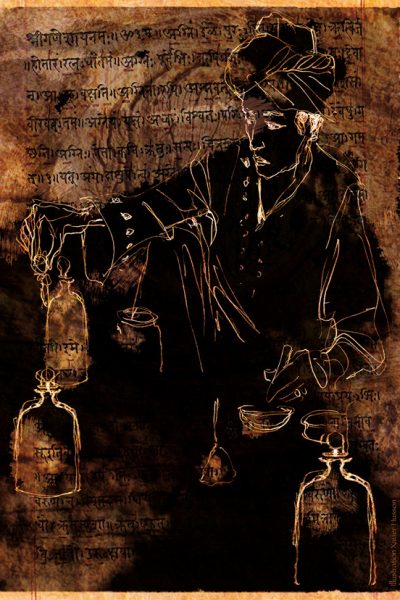
2015 ETERNAL ORIENT
Nothing is more cyclical than perfume tastes, making the finale come full circle. You might be fooled by taking oud, the latest trend in perfumery, to be a musical instrument, yet despite the similar sounding name, it bears no relation to said instrument even though it has reigned in popularity in the same regions.
Alternatively mentioned as oudh, aoudh, aloeswood or agar, and despite its relatively recent appearance in western perfumery, oud dates back to prehistory. Mentioned in the Bible, ancient Persian and Sanskrit religious texts, oud is inextricably linked to Assam’s and the Middle East’s cultural heritage. The Indian monarchs employed the used, fragrant bark of Sasi Agar tree as writing material for chronicling their royal circulars.
Oud comes from the pathological resinous secretion produced by Aquilaria malaccensis trees when infected by a parasitic fungus, to protect the plant, over the course of several decades. Its aroma, smoky, intensely musty-earthy, like undergrowth, with a touch of nuts, is exotic and unique. The depletion of the natural resource has made the material skyrocket in price, making perfume, the most democratic of luxury products, once again like long ago, fit for royalty!
The king of fragrance wears his djellaba in gold, studded with cognac diamonds. Bitter and oily whiffs of wood, of resin, of mold, of nuts.










